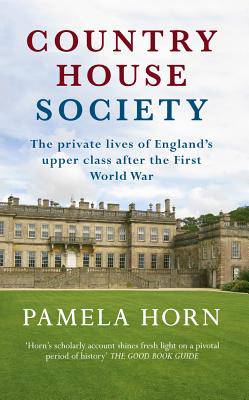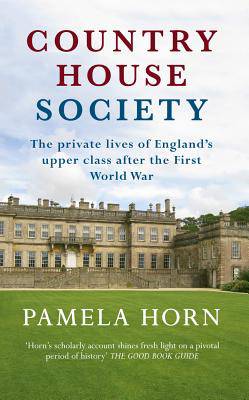
- Afhalen na 1 uur in een winkel met voorraad
- Gratis thuislevering in België vanaf € 30
- Ruim aanbod met 7 miljoen producten
- Afhalen na 1 uur in een winkel met voorraad
- Gratis thuislevering in België vanaf € 30
- Ruim aanbod met 7 miljoen producten
Zoeken
Country House Society
The Private Lives of England's Upper Class After the First World War
Pamela Horn
Paperback | Engels
€ 18,45
+ 36 punten
Omschrijving
The First World War particularly affected the landed classes with their long military tradition; country houses were turned into military hospitals and convalescent homes, while many of the menfolk were killed or badly injured in the hostilities. When the war ended efforts were made to return to the pre-war world. Pleasure-seeking in night-clubs, sporting events and country-house weekends became the order of the day. Many of the former rituals, such as presentation at Court for debutantes, were revived. Yet, overshadowing all were the economic pressures of the decade as increased taxation, death duties and declining farm rentals reduced landed incomes. Some owners sold their mansions or land to newly enriched businessmen. Others turned to city directorships to make ends meet or, in the case of the women, ran dress shops and other small businesses. The 1920s proved a decade of flux for High Society, with the lighthearted antics of the 'Bright Young People' contrasting with the financial anxieties and problems faced by their parents' generation. Pamela Horn draws on the letters and diaries of iconic figures of the period, such as Nancy Mitford and Barbara Cartland, to give an insight into this new post-war era.
Specificaties
Betrokkenen
- Auteur(s):
- Uitgeverij:
Inhoud
- Aantal bladzijden:
- 320
- Taal:
- Engels
Eigenschappen
- Productcode (EAN):
- 9781445644776
- Verschijningsdatum:
- 15/02/2015
- Uitvoering:
- Paperback
- Formaat:
- Trade paperback (VS)
- Afmetingen:
- 122 mm x 196 mm
- Gewicht:
- 317 g

Alleen bij Standaard Boekhandel
+ 36 punten op je klantenkaart van Standaard Boekhandel
Beoordelingen
We publiceren alleen reviews die voldoen aan de voorwaarden voor reviews. Bekijk onze voorwaarden voor reviews.











